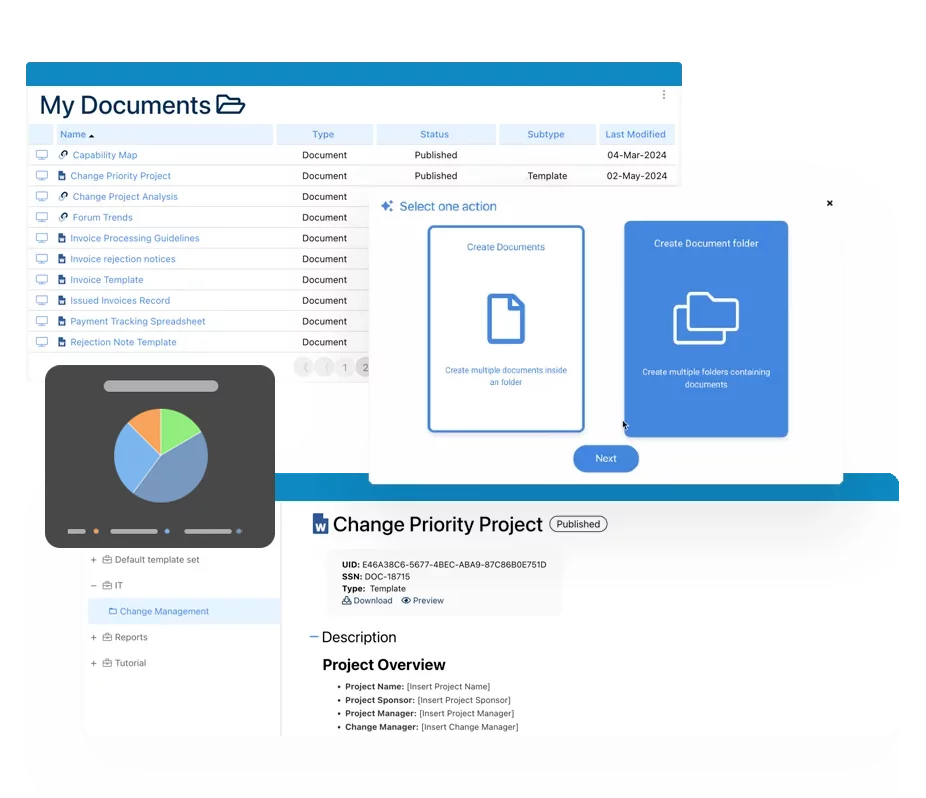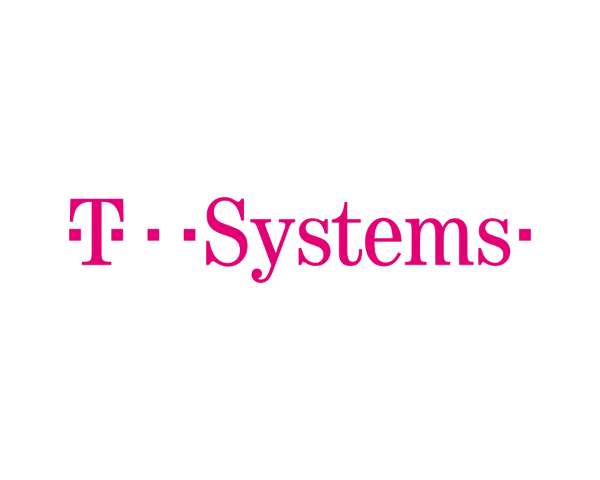- Business Process Management (BPM)Document Management System (DMS)Electronic Quality Management System (QMS)Risk, Governance & Compliance (GRC)Low Code Rapid Application Development (LC)Business Continuity Management (BCM)Enterprise Architecture (EA)Business Process Management (BPM)Document Management System (DMS)
- Document Control Overview
- AI Content Creation & Improvement
- Policy & Procedure Management (SOP)
- AI Content Mining Parser
- Collaboration & Governance
- Data Migration & Integration
- Interfacing Offline App
 Electronic Quality Management System (QMS)
Electronic Quality Management System (QMS)- Quality Management System Overview
- Document Control & Records Management
- Audit & Accreditation Management
- Corrective & Preventative Action
- Quality Event (Non-conformity / Complaint/ Compliance)
- Risk Management
- Incident Management
- Environmental Health & Safety
- Product & Supplier Management (SCAR)
- Training Management
- Control Management
- Action Items Management
- Management Review
- FMEA
- Pharmacovigilance
- Data Migration & Integration
 Risk, Governance & Compliance (GRC)
Risk, Governance & Compliance (GRC)- Risk, Governance & Compliance Overview
- Risk & Control Management
- Regulatory Compliance
- Collaboration & Governance
- Data Migration & Integration
- Interfacing Offline App
 Low Code Rapid Application Development (LC)
Low Code Rapid Application Development (LC)- Low Code Automation Platform Overview
- Electronic Web Form Design (eFORMS)
- Database Table Entity Designer
- System Integration Designer
- Design & Manage Tasks
- Design & Manage BPMS Apps
- Custom Rules/Guards/Actions
- Electronic Services
- User Homepage
- BAM (Business Activity Monitoring)
- Custom Dashboard Design
- Data Migration & Integration
 Business Continuity Management (BCM)
Business Continuity Management (BCM)- Business Continuity Management Overview
- Business Impact Analysis
- Disaster Recovery Simulation
- Action Item Management
- Mass Notification Management
- Asset Management
- Interfacing Offline App
 Enterprise Architecture (EA)
Enterprise Architecture (EA) - IndustriesRegulatory ComplianceUse CasesLearning CenterFramework & PracticesIndustries
- Healthcare
- Medical Device Technology
- Life Science, Pharmaceutical
- Aerospace & Defense
- Airlines and Aviation
- Media & Telecommunications
- Government and Military
- Technology
- Energy
- Logistics & Port Operations
- Banking & Capital Markets
- Retail & Consumer
- Consulting
- Education
- Engineering & Construction
- Manufacturing
- Financial Services
- Insurance
- Chemicals
Regulatory Compliance- Regulatory Compliance
- ISO
- ISO 9001 (guide)
- ISO 9001:2026 (preparation)
- ISO 17025
- ISO 27000
- ISO 27001
- ISO27002
- ISO 42001
- EU AI Act
- SOC 2 Type 1 & 2
- Sarbanes Oxley
- GxP
- GRC
- Basel
- Digital Signature
- GDPR
- IFRS
- NIST SP 800-53
 Use Cases
Use Cases- Quality Management System (QMS)
- Digital Transformation
- Continuous Improvement
- Governance, Risk & Compliance
- Knowledge Management
- System Deployment (ERP, CRM…)
 Learning CenterFramework & Practices
Learning CenterFramework & Practices - AboutCustomer SuccessPartners



BPMN Framework
Please Select contact form.
A simple approach

BPMN – Business Process Management Framework
BPMN is the most widely-accepted process documentation methodology in the world. Business Process Management Framework allows both technical and business users to quickly and easily model business processes.
A closer look at the advantages of Business Process Management Framework (BPMN)

Ensure Transparency
Know where resources are being used and encourage efficient work and habits by planning well in advance

Manage Workflow
Integrate your people, processes, and technology by taking advantage of our workflow engine to deliver work to where it’s needed, and keep all employees up to date with the most important priorities

Orchestrate Technology
Implement service orchestration to design more flexible communications networks that mirror the efficiency of your business process management

Portable Process Manuals
Generate a complete output of processes and all related information, ready for print. Allow collaboration for employees to share information widely.

Standard Methodologies
Avoid trial and error when improving client’s operational efficiency and get a head start by taking advantage of industry standards.

Encourage Collaboration
By uniting goals and creating a common framework for your clients, they will be able to cooperate at a previously unattained level.

Compliance
Our process methodology and support for business rules and risk/control management allows effective process design that has all the appropriate checks and balances

Utilize Resources
Business process management will expose unused resources and allow you to take better advantage of them along the length of the process.
What is BPMN?
What is BPMN?
Conceived and developed by the Business Process Management Institute (BPMI), Business Process Modeling Notation, or BPMN for short, is a graphical method of representing business processes within a business process model. The representation diagram is somewhat similar to a flowchart, though not exactly the same. Since 2005, when parent BPMI merged with the Object Management Group (OMG), the latter has been in charge of maintaining the Modeling Notation.
How does BPMN Work?
Business Process Modeling Notation makes use of a limited range of basic structural elements, easy enough for both technical and non-technical people involved in the project. These elements belong to one of the following four key categories.
With BPMN, modeling processes simply involves modeling the event that triggers the process and then mapping all of the activities or events (represented by rectangles) that occur until an outcome is reached. Decisions and alternatives are mapped using gateways (represented by lozenges), and all of the process shapes are then linked. The resulting process map closely resembles a flowchart that can be intuitively understood by non-technical business users.
The graphical notations achieve this objective by streamlining and simplifying divergent processes into compact, bite-sized bits of readily digestible information. In addition, the notations are standardized, which means developers, analysts and management executives all have the same frame of reference and level of understanding. For instance, BPMN can ensure that the otherwise complex documents coded in Extensible Markup Language (XML) can be visualized and understood with the help of a common notation that everyone understands.
Flow Objects
Flow Objects
Used to represent specific activities, events or gateways within the process. Symbols for flow objects include geometric figures such as triangles, rectangles, circles and diamonds. It should be remembered that within BPMN, an ‘activity’ is any work performed as part of a process. It is divided into two types – a) tasks, and b) sub-processes.
Connecting Objects
Connecting Objects
Used to represent association, message flow or sequence flow, these elements connect to flow objects using solid, dotted or dashed lines. Arrows may be included between flow objects and connecting objects, to show the direction of process flow. An ‘association’ shows how different text, data and other elements relate to each other.
Swimlanes
Swimlanes
Used to organize multiple flow objects into categories sharing similar functionality, swimlanes are depicted using straight lines that run lengthwise inside a rectangle. They are named so because of their resemblance to Olympic swimming pools’ lane lines. The rectangles in which swimlanes are drawn are in fact, known as ‘pools’ in BPMN.
Artifacts
Artifacts
Used to represent annotations, groups and data objects, artifacts are the fourth major element category used in the creation of Business Process Diagrams or BPDs. A ‘BPD’ according to BPMN is a diagram made of a collection of graphical objects/elements that represents a business process.
How Interfacing can help
Enterprise Process Center® uses BPMN to graphically depict the end-to-end flow of business activities.
Ranked Leader in the Gartner Enterprise Business Process Analysis (EBPA) MarketGuide, BPMS Platform Enterprise Process Center (EPC) supports the BPMN standard. You can model your processes and take them all the way to the automation/execution stage of the process lifecycle. BPMN flows can be automated to streamline the end-to-end execution of human and system-centric processes.
Why Choose Interfacing?
With over two decades of AI, Quality, Process, and Compliance software expertise, Interfacing continues to be a leader in the industry. To-date, it has served over 500+ world-class enterprises and management consulting firms from all industries and sectors. We continue to provide digital, cloud & AI solutions that enable organizations to enhance, control and streamline their processes while easing the burden of regulatory compliance and quality management programs.
To explore further or discuss how Interfacing can assist your organization, please complete the form below.

Documentation: Driving Transformation, Governance and Control
• Gain real-time, comprehensive insights into your operations.
• Improve governance, efficiency, and compliance.
• Ensure seamless alignment with regulatory standards.

eQMS: Automating Quality & Compliance Workflows & Reporting
• Simplify quality management with automated workflows and monitoring.
• Streamline CAPA, supplier audits, training and related workflows.
• Turn documentation into actionable insights for Quality 4.0

Low-Code Rapid Application Development: Accelerating Digital Transformation
• Build custom, scalable applications swiftly
• Reducing development time and cost
• Adapt faster and stay agile in the face of
evolving customer and business needs.
AI to Transform your Business!
The AI-powered tools are designed to streamline operations, enhance compliance, and drive sustainable growth. Check out how AI can:
• Respond to employee inquiries
• Transform videos into processes
• Assess regulatory impact & process improvements
• Generate forms, processes, risks, regulations, KPIs & more
• Parse regulatory standards into requirements

Request Free Demo
Document, analyze, improve, digitize and monitor your business processes, risks, regulatory requirements and performance indicators within Interfacing’s Digital Twin integrated management system the Enterprise Process Center®!
Trusted by Customers Worldwide!
More than 400+ world-class enterprises and management consulting firms


























































